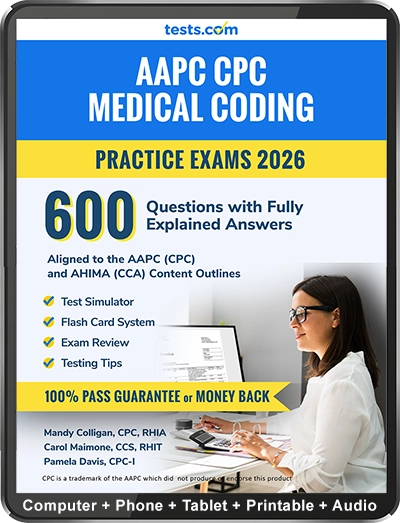2026 Edition
Medical Coder Practice Test
Study Online Instantly

Click to Save 50% Now
2026 Edition

Certification as a medical coder demonstrates one's knowledge and skill in the field of medical coding and can help one get a job as a medical coder and earn more in pay. The American Academy of Professional Coders (AAPC) and AHIMA provide training and credentialing for medical coders across the United States. After passing the AAPC medical coding exam, a medical coder earns the Certified Professional Coder (CPC) credential and after passing the AHIMA medical coding exam, the medical coder earns the Certified Coding Associate (CCA) credential. The medical coder exam must be passed to earn certification. The AAPC medical coding exam has 100 multiple choice questions and four hours is given to complete the exam. The AHIMA exam has between 90 and 115 questions and must be completed in two hours.
For a comprehensive practice test, use our 600 question Medical Coding Practice Test covering both the AAPC CPC exam and the AHIMA CCA exam. It is written by medical coding instructors. Our interactive test platform allows you to simulate the exam. Take as many practice tests as you need. There's no time limit or recurrent charges.
For more information on the medical coding and test prep, see the Medical Coding Study Guide.
For additional practice for medical billing, use our 500 Question Medical Billing Practice Exam.